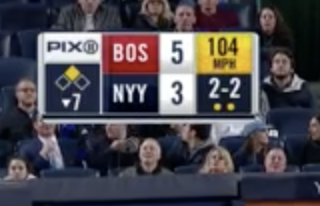A Revolution Is Only as Good as Its Process
Long-time UCLA baseball coach Gary Adams was nearing the end of his coaching tenure when he made his way to The Ball Yard in 2003 to talk hitting philosophy. The Ball Yard is a spartan hitting facility, containing two batting cages, located in a nondescript building in a business park in Chatsworth, Calif. There, Doug Latta and Craig Wallenbrock, a former major-league scout, worked as private hitting instructors. There was a UCLA connection: Bruins star Chase Utley was a client of Wallenbrock, and other UCLA players had worked at the facility.
Whatever you want to call the effort in the majors to hit balls less often on the ground, much of the grassroots movement — many of the alternatives to traditional and professional hitting philosophy — began at places like The Ball Yard, the hitting equivalent to garage start-ups.
At some point, Adams and Latta engaged in a separate conversation as they walked to exit the facility. After Adams listened to their philosophies on the swing, after hearing Latta’s antipathy for a ground-ball-oriented approach, Adams asked Latta a hypothetical question: what kind of swing would he have recommended Dave Roberts to adopt? Robert was a former UCLA standout under Adams, one who became a useful major-league player, mostly known for his speed. He is, of course, now the manager of the Los Angeles Dodgers. Roberts slashed .266/.342/.366 over parts of 10 major-league seasons.
Even many proponents of the #NoGroundballs club would look at Roberts as an exception, a player who should put the ball on the ground to ensure that his speed is a factor as often as possible. As a layman of hitting mechanics, that concept makes sense to this author.
“I think that’s what Dave did. He made it to the big leagues,” Latta said of hitting ground balls. “But I think Dave Roberts could have had an outstanding career. He had incredible makeup. He’s a phenomenal manager because of his makeup and the way he approached the game. Good outfielder. But what happens if he suddenly hits like a Justin Turner? (Turner is a Latta client.) He could have been one of the great lead-off men of his generation.”

Had he worked with Roberts, Latta would have recommended dramatic swing changes. Perhaps today’s Roberts comp is Billy Hamilton: a player with incredible speed but whose swing and whose ability to hit have limited his overall value and the utility of his speed. Hamilton is a player who has probably been coached to hit the ball on the ground since he began playing baseball. With changes to his approach and swing, Latta thinks, the offensively challenged Hamilton could get to some untapped potential. (Hamilton has a 60 wRC+ for the season and 70 for his career.)



